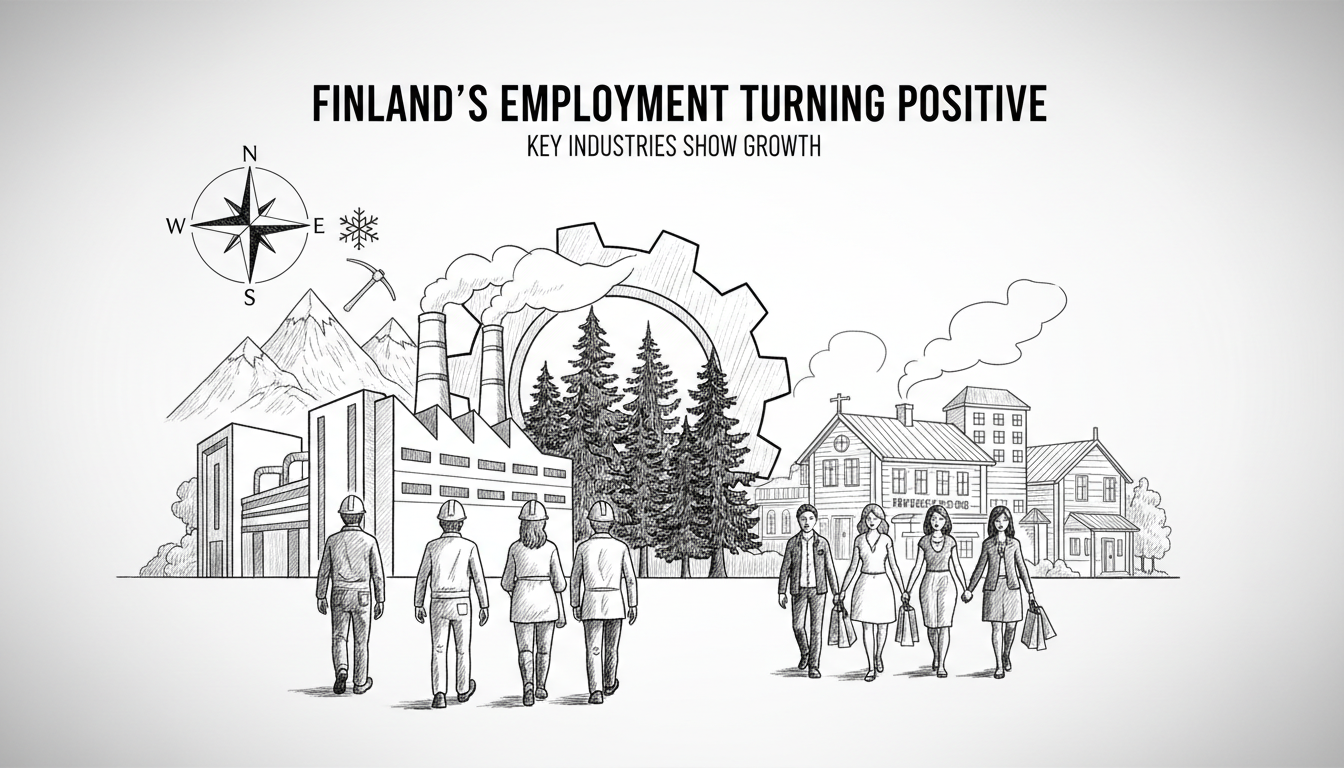Finland's employment situation is finally showing signs of improvement according to the latest labor market forecast from the Ministry of Economic Affairs and Employment. The positive turn begins in industry, driven by exports and investments, with manufacturing expected to boost employment starting in the final quarter of this year.
The forecast indicates that employment will begin growing by the end of this year after a prolonged period of stagnation. Ministry officials confirm that labor markets are showing the first concrete signs of improvement in the near future. This employment turnaround typically follows patterns where increased demand first leads to longer working hours and temporary hiring before permanent staff expansion.
Recent data reveals encouraging developments. The number of entrepreneurs and part-time workers has already started growing. Employment among foreign nationals also turned positive in the last quarter and has continued this upward trend. However, total working hours remain at relatively low levels across many sectors.
The green transition and artificial intelligence development are generating investments, though their employment impact remains limited in areas like wind power and data centers. Economic growth focused on investments and exports explains why employment growth remains modest compared to overall economic expansion.
Industrial production growth only partially translates into employment gains because productivity improvements through investments mean companies can produce more with fewer workers. This represents a fundamental shift in how economic growth connects to job creation in modern Finland.
Service sectors, particularly culture and entertainment, provide the second foundation for employment growth. These areas have shown strong employment increases that are expected to continue throughout the forecast period. This reflects changing consumption patterns as Finns prioritize experiences and leisure activities.
The construction sector presents a mixed picture. Housing prices haven't yet turned upward despite increased transaction volumes. A large inventory of unsold new developments persists, with no growth in building permits or construction starts. This suggests no quick turnaround for construction employment in the immediate future.
Based on banking barometers and consumer confidence surveys, expectations for household home purchase intentions have stabilized. Construction confidence and employment prospects are improving gradually but remain cautious. Interest rate decreases and improved purchasing power are creating pressure for housing market recovery, while urbanization and population growth generate longer-term construction demand.
Employment in the retail sector continues declining until next year's end, but accommodation and food services return to growth early next year. Public finance difficulties slow employment recovery in publicly funded services, reflecting ongoing budgetary constraints at municipal and national levels.
The unemployment outlook remains similar to spring forecasts, though the consistently worsening trend since spring 2023 now appears to be reversing. The comprehensive reform of social assistance will register approximately 16,000 benefit recipients as unemployed job seekers in 2026, increasing unemployment statistics without changing the actual number of people without work.
Regional variations show distinct patterns. Unemployment has decreased most sharply in Lapland and Kainuu, thanks particularly to tourism and mining industry growth. Meanwhile, Uusimaa region experiences strong unemployment growth, partly due to working-age population increases. By 2027, Uusimaa's unemployment rate is projected to exceed the national average by 0.6 percentage points.
Labor supply constraints have largely disappeared. The Ministry notes that labor shortages have shrunk to one-tenth of what was seen during the 2023 economic peak. The list of shortage occupations has narrowed mainly to key healthcare and social services professions.
This employment turnaround comes as welcome news for Finland's economy, though the recovery remains gradual and uneven across regions and sectors. The shift signals that Finland's export-oriented economic model is beginning to translate into domestic job growth after several challenging years.

